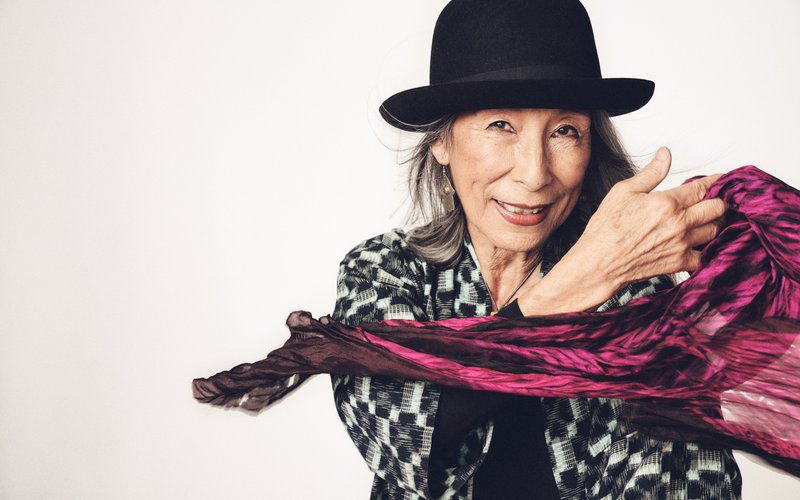
KEXP's Sound & Vision airs every Saturday morning from 7-9 AM PT, featuring interviews, artistry, commentary, insight, and conversation to that tell broader stories through music, and illustrate why music and art matter. You can also hear more stories in the new Sound & Vision Podcast. New episodes are out every Tuesday and Thursday. Subscribe now.
Nobuko Miyamoto is a musician, dancer, actress, and activist who released an album this year titled, 120,000 Stories. The album’s title was named after the approximate number of people who were sent to Japanese internment camps during World War II.
Miyamoto lived in Japanese internment camp as a child. It was located in a racetrack in California. The experience was traumatic for Miyamoto’s family. She was two years old and doesn’t remember much herself, but recounts: “We happened to live in a horse stall. That’s where they put us and that’s where we slept.”
Miyamoto’s mother had wanted to be an artist, and when that opportunity was taken from her, she encouraged Miyamoto to pursue her own interests in the arts. Miyamoto was drawn to dance and music, eventually studying at the American School of Dance in Hollywood. She landed roles in the original Broadway production of Flower Drum Song, and in the film versions of The King and I and West Side Story. But after performing the music and words of others for so long, Miyamoto says she felt ready to find her own voice and step out of the white gaze: “Long after I did Flower Drum Song, I made my decision that I didn't want to be on a stage singing somebody else's music. I wanted to choose the songs that I sang that I felt represented me.”
She studied music and sang in a nightclub in Seattle as the Vietnam War was going on. Creating for herself soon dovetailed with activism. She worked on a film for the Black Panthers, and her exposure to the Black Power movement led her to the Asian American movement. She recalls that: “For the first time in my life I was meeting activists who were Japanese American, Chinese American, who were standing up for their rights, who were against the war in Vietnam and who were seeking their own identity. It was through our experiences of wanting to express something that we actually began writing music together. And we performed it for the first time, this was in 1970 in front of an audience of Asian Americans. Very different from that experience of performing on Broadway facing these white faces.”
Miyamoto’s music explored not only her activism, but her personal journey and experiences. Her husband was killed while trying to establish Malcolm X’s Mosque of Islamic Brotherhood in Harlem, and she was left as a single mother raising a Black, bi-racial son. She reflects on this in the song “What is the Color of Love,” explaining: “The song is really about my feeling of helplessness in some ways. How do I show him how to be a man? How do I protect him from people who say bad things?”
Miyamoto enveloped her son in the arts, frequently taking him to Leimert Park in Los Angeles – a neighborhood known for its Black art. She says: “The two of us were there and could find a place where art, music, poetry, was constantly on the streets to show him that he is a part of something bigger than himself. And I think that gave him a lot of confidence and a place of belonging, which we all need.”
Miyamoto is 81 now, and after decades of activism and being involved in the arts, she sees the connective tissue between the eras she’s lived through, and has hope for the future:
“I feel like I was very fortunate to be able to live through the sixties and the seventies to be able to, to be part of a movement, of an awakening. Every day is an awakening. Today, we have awakenings. We have Black Lives Matter. We have climate change. We have young people rising up. I think connecting these intergenerational connections is really important. Maybe that’s why I’m here, because I want to tell the story of what we did then and what we are still doing now. It’s all connected and we are making slow progress towards a more just world.”
Her album, 120,000 Stories, was released in January 2021 by Smithsonian Folkway Recordings.